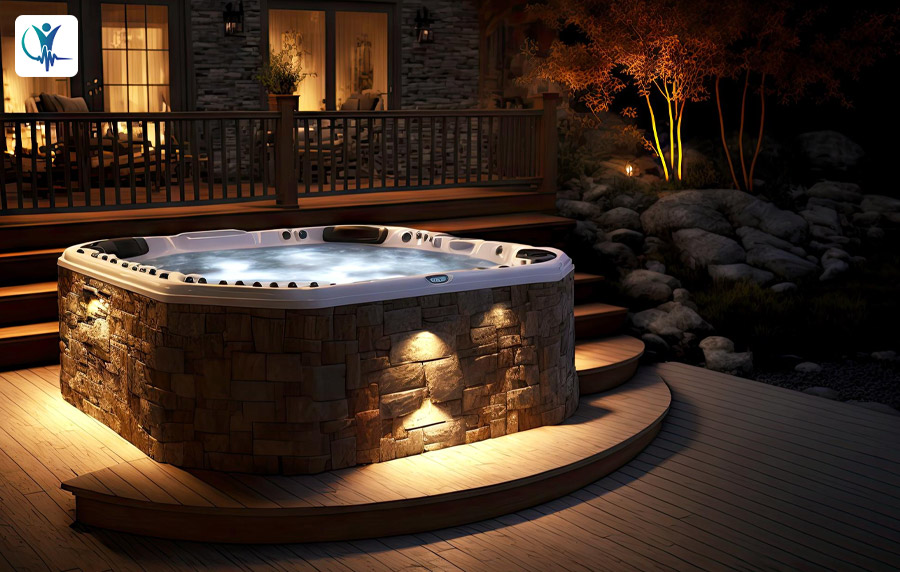Starting our exploration of the many sports and fitness recovery, Ice bath tub emerged as a prominent instrument. In this discourse, we shall navigate through the intricacies of these cold enclaves, deciphering their functionalities, the merits they proffer, and the conceivable downsides intertwined with their utilization.
As far as post-exerciser recovery goes, the sight of elite athletes submerging themselves in icy baths or witnessing fitness enthusiasts extolling the virtues of frigid water immersion has become increasingly commonplace. Cryotherapy, encompassing the therapeutic application of cold, is not a recent trend but a practice with deep historical roots. Celebrities, ranging from football luminaries to vocalists, partake in this chilling ritual.
What Is An Ice Bath Tub? How To Take The Bath?

While fans of cold-water plunges claim that they are effective in alleviating muscle soreness, reducing inflammation, and fostering improved sleep, the scientific community remains divided on the verifiable benefits of such practices.
Delving into the merits of using an ice bath tub, these cold soaks, distinct from the more extreme whole-body cryotherapy, involve a brief immersion of approximately 5 to 10 minutes in water maintained at a temperature between 50 and 59 degrees Fahrenheit. Advocates of this practice espouse its utility in addressing muscle soreness and stress.
Decoding the Essence of Ice Bath
A metal ice bath tub vessel, a receptacle meticulously crafted for immersing the body in frigid water, typically laced with ice, assumes the role of a catalyst in instigating therapeutic outcomes. This ritual finds prevalent adoption among athletes, fitness aficionados, and those ardently seeking swifter recuperation after demanding physical exploits.
The Process of Ice Bath
Functioning as a conduit for cryogenic immersion therapy ice bath tub mitigates swelling and cellular degradation through the constriction of blood vessels and a curtailment in metabolic activity. The rapid oscillation between cooling and rewarming stimulates circulatory processes, expediting the expulsion of detritus from impacted tissues. The advantages encapsulated within a cryotherapy regimen encompass alleviated muscle soreness, accelerated recuperation, and mitigated inflammation—a boon for those contending with inflammatory ailments or injuries. In essence, cryogenic immersion therapy stands as a salutary intervention for an array of health needs.
What Are The Benefits Of Ice Baths?
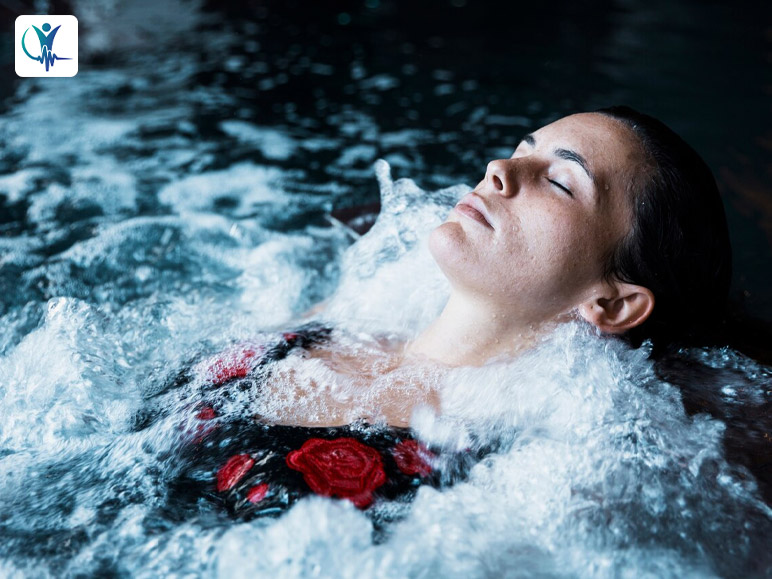
Investigating the alleged health benefits, let’s examine five facets supported by scientific inquiry by using the ice bath tub.
- Mitigation of Inflammation and Swelling:
Engaging in an ice bath induces vasoconstriction, narrowing blood vessels and diminishing blood flow to muscles, potentially mitigating inflammation and swelling. Research posits that this cold therapy might outperform alternatives like compression socks in managing post-exercise inflammation.
- Alleviation of Sore Muscles:
The process behind ice bath tub efficacy in relieving sore muscles remains unclear, with hypotheses suggesting reduced inflammation and slowed nerve signaling. While some systematic reviews hint at diminished delayed-onset muscle soreness (DOMS), the quality of these studies leaves room for skepticism.
- Facilitation of Exercise:
Recovery Post-immersion, blood vessels dilate, enhancing circulation and facilitating the removal of metabolic waste. Yet, the literature on ice bath tub as a post-workout recovery tool is inconclusive, with potential drawbacks noted in hindering training adaptations for muscle building and performance improvement.
- Support for Immunity:
Limited evidence suggests that ice baths may bolster the immune system, with a study linking cold-water immersion, deep breathing, and meditation to reduced bacterial infection symptoms. However, broader conclusions on cold-water immersion’s general immune efficacy remain challenging.
- Enhancement of Mental Health:
Bathing in an ice bath tub might extend benefits to mental well-being, as evidenced by a study showing improved quality of life and reduced stress, anxiety, and depression in participants with gout. Cold water exposure’s stress response activation and its impact on the nervous system could underlie these positive changes.
Guidelines For Creating An Ice Bath
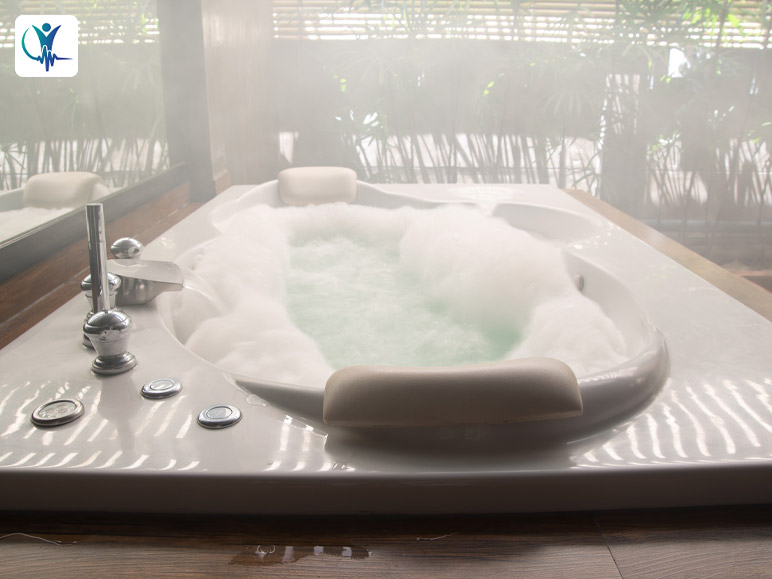
Here are the guidelines which you need to follow to use the ice bath tub.
- Guidelines for creating an ice bath are inconsistent, necessitating reliance on research findings and anecdotal insights. Home-based ice baths, utilizing a tub, ice cubes, a thermometer, and a timer, offer a flexible option. Enthusiasts recommend gradually acclimating to cold-water exposure to mitigate the shock to the system.
- The frequency of ice bath tub utilization varies among athletes, with some endorsing immediate post-workout immersion to alleviate DOMS. The risks associated with this practice, such as cardiovascular stress and hypothermia, underscore the importance of consulting healthcare professionals, especially for individuals with specific health conditions.
- For those wary of ice baths, alternative muscle recovery methods abound. A cooldown incorporating low-intensity cardio and static stretches, active recovery through activities like swimming or yoga, foam rolling exercises, and prioritizing restful sleep all contribute to the holistic approach to aiding muscle recuperation.
Safety Concerns while Taking Cold Therapy
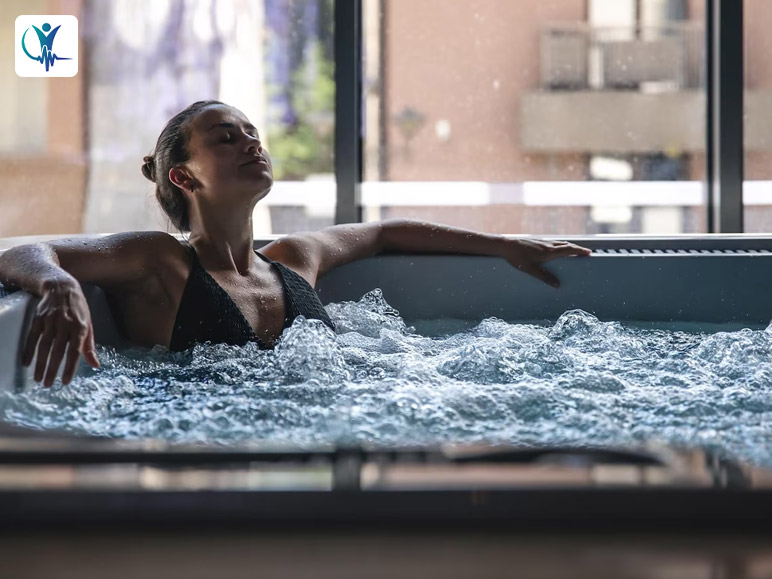
The metal tub for the ice bath ensures a better effect. But for the right and effective support, you have to measure the right temperature before stepping into the ice bath tub. Small errors can hamper your overall health benefits.
- Discomfort and Thermic Strain:
The submersion into cold aqueous environs, though integral to the therapeutic process, may usher in discomfort, potentially triggering thermic strain with adverse ramifications for certain individuals.
- Perils of Hypothermia:
Extended exposure to intensified ice bath tub amplifies susceptibility to hypothermia, particularly in the absence of precautionary measures.
- Evolution of Scientific Consensus:
Despite the anecdotal substantiation buttressing the advantages of cryotherapy, the scientific community grapples with an ongoing evolution in consensus regarding its efficacy.
In Conclusion
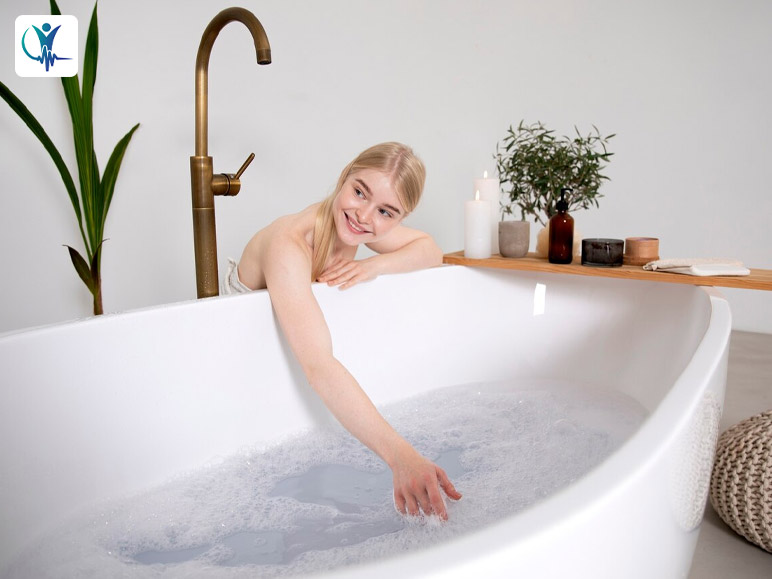
While ice bath tub hold sway as a popular post-workout recovery technique, their benefits and risks necessitate careful consideration. Consulting healthcare providers becomes imperative to assess individual suitability and safeguard against potential adverse effects.
Must Read :
- 5 Yoga For Back Pain
- What Is Balanced Diet?
- What Are Weight Gain Pills?
- What Is Post-Traumatic Growth?
- All You Have To Know About Nutrafol

